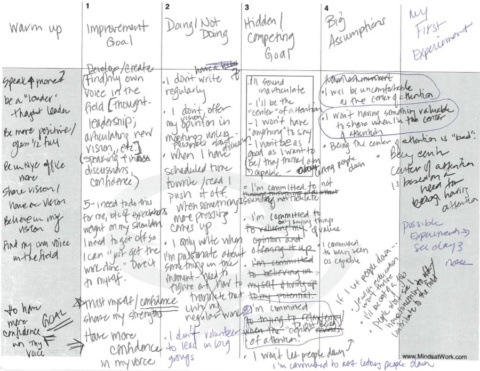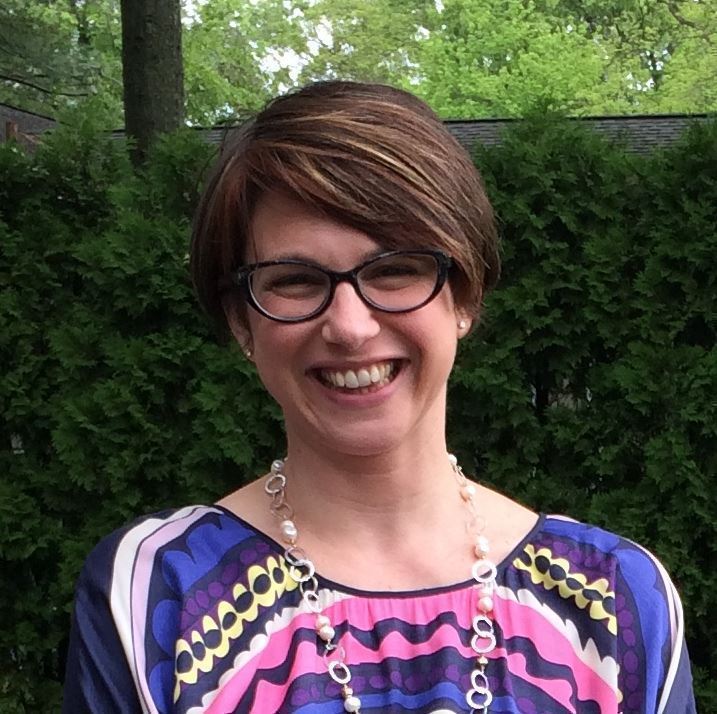05
Aug 2019
Embracing Change through the Mess
I’m a perfectionist, a perfectionist who embraces the mess of change.
The last time I taught an Immunity to Change workshop, I thought to myself, “I should really clean up my own Immunity to Change map – it is so messy.” What would it mean to clean it up? Well, if you know me, you might imagine that I would try to address an exhaustive series of questions – Should I rewrite a “perfect” version of my map? Do the words on it even make sense? Am I still working on this particular improvement goal or has it changed? Is this even a good example for participants? That list could go on forever, as I said, I’m something of a perfectionist. I’m tempted to address countless questions about a single piece of paper that I’ve held onto for a handful of years. I’m tempted to make it perfect, to change it. But I haven’t changed it. I don’t think I will. That piece of paper is too important as it is precisely because it is messy. Change is messy.
Early on in my workshops I announce to the group my own personal improvement goal to trust my voice more, to be more comfortable sharing my ideas with the world. I share that I’ve been working on this goal on my own and together with my coach and with my colleagues and supervisor. I then show my map to every single person in the room. Rather than just show a quick image on a slide, I actually walk around and make sure each person puts their eyes on my map with my short-hand, scribbled writing, underlines and cross-outs. I want them to see my mess up close. I want them to know that I struggled with this too.

I hope that showing my messy relationship with change and my struggle to uncover those areas where I need to grow demonstrates that it is okay to be vulnerable. Indeed, it may be the only way that we can enter the mess that is change and growth. We make ourselves vulnerable when we expose those areas we feel less sure, those areas where we need to grow, those areas – dare we say – of weakness. This is, inevitably, messy. It requires us to confront our fears and our biases and put them out there for others to see. I share my messy change map because I couldn’t possibly expect a group of educational leaders to put their most vulnerable selves on a piece of paper and share if I I’m not willing to do the same.
The mess of change and growth does not only exist on a piece of paper, but in the work itself. It can take many forms: insecurity about new work, uncomfortable conversations with stakeholders, even failure at a particular task. But, from those steps back, we can take leaps forward for ourselves and our organizations. For example, this past spring I was the lead on a 50-person 2.5-day conference on thriving in Jewish education. I had successfully put together single-day experiences before, but never multiple-day experiences with so many participants and the first of its kind for our population at my agency. I could argue that this was the largest professional lift of my career thus far. The only way I knew how to make it through with my planning team was to say: “I don’t know” at times or “we’ll have to try this and see what happens.” All of it was new to us, but we had decades of experiences in Jewish education to draw on and deep relationships with our participants who trusted we would provide an excellent product.
What I try to model for my colleagues is that being vulnerable and pushing past our fears and our biases isn’t a one-time thing. It is a way to live our lives. Each day we have choices we can make – to share something about ourselves, to take on that new piece of work, to have a difficult conversation, to pick the uncomfortable rather than the comfortable. When we do that, we open ourselves up to the possibilities for growth and well-being that only come from change.

Get To Know The Author
Wexner Field Fellow Rabbi Jennifer Ossakow Goldsmith (Class 2) is the Managing Director of Congregational Learning and Leadership Initiatives at The Jewish Education Project in New York. Born in Cleveland, Ohio, and raised in Ann Arbor, Michigan, Jennifer received her BA from the University of Michigan and rabbinic ordination and MA in Religious Education from HUC-JIR. Jennifer’s ongoing study of leadership theory drives her commitment to helping Jewish leaders harness their resources to create meaningful change. Prior to her time at The Jewish Education Project, Jennifer worked as the Director of Life-Long Learning at Larchmont Temple helping engage families at every age and stage of their Jewish journeys. Her current work concentrates on fostering and spreading educational innovation that helps learners thrive through consulting, grant initiatives, online resources, professional networks and leadership development. She facilitates workshops and seminars on innovation in part-time Jewish education and leadership across the country. Jennifer lives in New Rochelle, NY, with her husband, Rabbi Howard Goldsmith, and their two children Lev and Talia.
Other posts by this author ›
